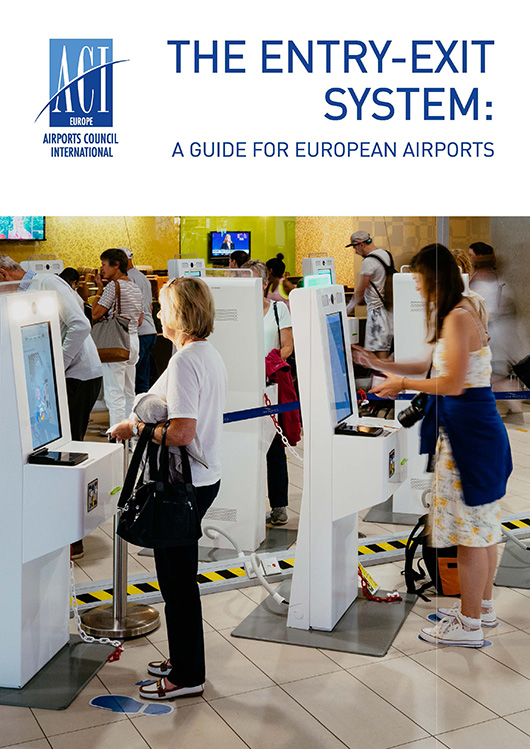As part of its border management strategy, the EU adopted two regulations that require Member States to register the entry and exit of third-country nationals at the external borders of the Schengen area through an automated IT system named the Entry-Exit System (EES). To help airports in the EES implementation, ACI EUROPE published a guidance document entitled “The Entry-Exit System – A Guide Document for Airports”. Federico Bonaudi reports.
The EU Entry/Exit System (EES) is an instrument to modernise the EU’s external border management and to contribute to combating terrorism and serious crime, alongside other important border management and security issues. Regulations (EU) 2017/2226 and (EU) 2017/2225 create a centralised Entry/Exit System (EES) for non-EU nationals crossing the EU’s external borders for a short stay. It also makes changes to the Schengen Borders Code, adapting it to this new system.

In order to provide Airport Managing Bodies with the basic tools to understand the main aspects of the EES, along with its operational and financial implications, ACI EUROPE published “The Entry-Exit System – A Guide for European Airports”.
The EES is an automated IT system to register all entries and exits of third-country nationals at the EU’s external borders. It will apply both to travellers who need a short stay visa and to those that are visa-exempt. The EES will also register refusals of entry and calculate the authorised stay for each traveller. It will replace the current practice of manual stamping of passports, which is time consuming, and fulfils the objective of facilitating the effective detection of over-stayers.
Although both regulations have been applicable since 29 December 2017, the European Commission will decide when the EES will start its operations. This will happen once the technical aspects are defined and completed by eu-LISA, the European agency in charge of managing large-scale IT systems that are essential to the implementation of the asylum, border management and migration policies of the EU. Additionally, all concerned Member States have had to submit their declaration of readiness.
Before the COVID-19 pandemic and the consequent temporary reintroduction of border control within the Schengen area, it had been estimated that the EES would enter into force in February 2022. However, the current coronavirus crisis may delay the launch of its operations.
For European airports, the EES will have important operational and financial implications. The border control area, equipment and process will have to be adapted in order to process all the different categories of travellers and to avoid long waiting lines. At the same time, despite their obligations stemming from the legislation in force and the European funding allocated, some Member States require Airport Managing Bodies to finance border control infrastructure.
In order to provide Airport Managing Bodies with the basic tools to understand the main aspects of the EES, along with its operational and financial implications, ACI EUROPE published “The Entry-Exit System – A Guide for European Airports”. The guide proposes several border control configurations that airports may adapt depending on their specificities. It also provides airports with essential information to be used in their exchanges with the national authorities in charge of border control.
The Entry-Exit System: A Guide for European Airports is available at https://www.aci-europe.org/component/attachments/attachments.html?id=883
For more information, please contact federico.bonaudi@aci-europe.org
Federico Bonaudi is the Head of Facilitation, Parliamentary Affairs & Regional Airports at ACI EUROPE.







